From the November 2022 issue of Apollo. Preview and subscribe here.
The centenary of the discovery of the tomb of Tutankhamun by Howard Carter and his British and Egyptian workforce will be marked relatively modestly in Egypt this month. Carter’s mudbrick house in Luxor is undergoing restoration and redisplay, and its opening will be accompanied by a sober academic conference. Plans for a glitzy debut of the long-anticipated $1.5bn Grand Egyptian Museum, designed to display the complete contents of Tutankhamun’s tomb, were quietly dashed earlier this year, while an opera about Tutankhamun, its libretto written by Egyptian Egyptologist Zahi Hawass, also appears to have been postponed. Attendees to COP27, held in the Red Sea resort of Sharm el-Sheikh, however, will be able to see a selection of objects from the tomb in the city’s giant new museum.
If a peaceful hour viewing Tutankhamun’s treasures may seem like the ideal break from the horsetrading and grandstanding at COP, a hundred years ago the discovery of the tomb and debates about its contents were political hot potatoes: the fate of the tomb was tied up with the prospects for a newly (if partially) independent Egypt and the reality of Britain’s imperial retreat. Tutankhamun’s gold became an active participant in 20th-century politics at the moment of its discovery, from the Egyptian government’s struggle to assert its ownership of the tomb in the 1920s to the blockbuster exhibitions of the ’70s and ’80s that sealed the country’s rapprochement with the West. The National Archives in London hold fat files of memoranda, letters and even intercepted telegrams relating to what a clerk at the British High Commission in Cairo filed away as ‘Lord Carnarvon’s discoveries’. Egyptological accounts of the excavation have ignored these papers until now – not enough hieroglyphs? – but these unpublished political archives reveal the tomb to be less a treasure trove than a diplomatic minefield.
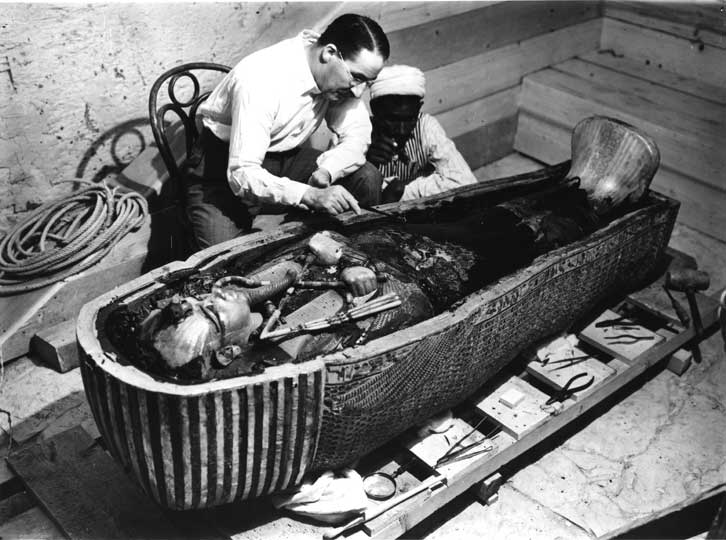
Howard Carter and an unnamed Egyptian assistant inspect Tutankhamun’s innermost coffin in November 1922. Photo: Harry Burton; © Griffith Institute, University of Oxford
By 1922, British soldiers and civil servants, headed by a High Commissioner and an army of occupation, had effectively run Egypt for 40 years. They dispensed unignorable advice to the Khedives, Egypt’s rulers, who were themselves the viceroys of the Ottoman Sultans. Egypt’s antiquities, however, had been overseen by a Service des Antiquités run by French archaeologists since the 1850s. This exception to British control was important enough to France to be codified in the small print of the Entente Cordiale agreement in 1904, which otherwise gave Britain free rein in Egypt. When the Ottoman Empire sided with Germany in the First World War, the British government declared Egypt a protectorate, deposed the anti-British Khedive and promoted his successors to the rank of Sultan. After the war, a delegation seeking Egyptian independence was barred from attending the Paris Peace Talks. Its leader Saad Zaghlul stirred up anti-colonial demonstrations throughout Egypt and was deported to Malta in 1919. Faced with a country in revolt, High Commissioner Lord Allenby pushed the British government to grant Egypt unilateral independence in February 1922. Sultan Fuad was upgraded to King, but the British still reserved a right to control Egypt’s defence, communications and the Suez Canal. Egypt’s antiquities, however, were hers to organise how she wanted. Howard Carter and his patron the Fifth Earl of Carnarvon – able to excavate and collect thanks to his marriage to Almina Wombwell, widely believed to be the illegitimate daughter of Alfred de Rothschild – would come to regret this.
Lord Carnarvon was confident that many of Tutankhamun’s ‘wonderful things’ would soon be his, since his excavations in the Valley of the Kings were regulated by a contract with the Service des Antiquités that allowed him a half share of anything he found. Excavators rated sites by their potential for attractive discoveries for their museums and sponsors, and a 50–50 split was standard, but this generous division of finds was coming under scrutiny in a semi-independent, nationalist Egypt. Carnarvon was soon leveraging his anticipated share of finds to enlist the practical support of the Metropolitan Museum of Art. The Met lent him the services of archaeologist Arthur Mace and photographer Harry Burton, whose pictures of the tomb vividly brought its treasures to audiences world-wide. Carnarvon signed a lucrative deal with the Times of London that gave the paper privileged access to the tomb, the excavators and Burton’s photographs, but forced other papers – including Egyptian ones – to pay the Times for access, or content themselves with printing day-old news.

Miniature canopic coffin (one of four) from the tomb of Tutankhamun (c. 1320 BC). Grand Egyptian Museum, Cairo. Photo: Sandro Vannini
Carnarvon and Carter had surreptitiously entered Tutankhamun’s sealed burial chamber the day they entered the tomb, 26 November, but its official opening in February 1923 revealed that the king’s mummy awaited its discoverers untouched within a dazzling series of gilded shrines and nesting coffins. The prospect of a British lord profiting from the sale of news and photographs and ending up with half of Tutankhamun’s burial equipment angered many Egyptians and worried the Service des Antiquités. Its director Pierre Lacau had long been opposed in principle to private excavators, but had to acknowledge that Carnarvon’s licence to excavate was legal and that Carter’s talents as an excavator were beyond doubt. Both excavators and the Service tiptoed around the elephant in the tomb: how the finds were to be divided. Lord Carnarvon’s death in April 1923 sparked rumours of the pharaoh’s curse; more prosaically, although the widowed Lady Carnarvon inherited the excavation it meant that Carter had to deal with the Service and the press, not his urbane patron. The political climate was also changing. Saad Zaghlul returned to Egypt from exile in September 1923 and led the nationalists to victory in elections in January 1924. Pharaonism became all the rage under independent Egypt’s first prime minster: neo-pharaonic monuments such as Nahdet Masr (‘Egypt Awakes’), a colossal granite group of a sphinx and a peasant woman greeting the dawn, linked Egypt’s independent future to its past. Why should foreigners have any say in either?
By the time Carter and his team planned to raise the lid of the king’s stone sarcophagus in February 1924, he had comprehensively alienated the Service, which complained to Lord Allenby: ‘[Carter] already exaggerates very seriously his services to the Egyptian Government and speaks of himself with the respect due to a European Power. This is a disquieting symptom.’ In turn, the wealthy British Egyptologist Alan Gardiner lobbied Prime Minister Ramsay MacDonald to order Lord Allenby to prevent the Service committing ‘an act of piracy of the worst kind’ by cancelling Carter’s contract. Allenby scribbled, ‘I have never given an opinion, or expressed sympathy with one side or the other. But it is not worth while doing anything’ in the margins of the memo. Another diplomat acidly commented ‘at the bottom of the whole trouble there lies the evil genius of archiological [sic] jealousy’. The High Commission did its best to steer clear of the debacle that followed: outraged that his collaborators’ wives were denied a private view of the Burial Chamber, Carter halted the excavations, leaving the sarcophagus lid dangling ominously over the coffins and mummy of the king. The Service promptly rescinded Lady Carnarvon’s contract; Carter sued to establish the expedition’s rights; the Service offered Lady Carnarvon a new contract, provided she renounce any claim to objects from the tomb; Carter’s lawyer turned out to have prosecuted the nationalist minister of public works for treason a few years earlier, and described his current conduct with a slur that caused a total break in negotiations. Carter left Egypt to undertake a lucrative lecture tour in North America, but the future was bleak.
If the political situation evicted Carter from Tutankhamun’s tomb, it also reinstated him. In November 1924 Egyptian students assassinated Sir Lee Stack, the British commander of the Egyptian Army, as he drove through Cairo. Allenby demanded heavy reparations from Saad Zaghlul’s government, and Zaghlul resigned. A less anti-British government was appointed. The unstoppable Alan Gardiner saw an opportunity and wrote again to Ramsay MacDonald:
Deeply as I, in common with all other Englishmen, deplore the atrocious murder which has deprived the British Empire of one of its most distinguished and beloved servants, yet I cannot disguise from myself the fact that this event is bringing about a change of direction in our Egyptian policy which seems likely to prove most beneficial in many ways. […] May I venture to express the hope that, in any new settlements which may become necessary there during the next months, the claims of archaeology will not be utterly forgotten? […] It is the earnest hope of all Egyptologists that now at last justice may be done to their cause.
While MacDonald’s secretary brushed him off once more, Gardiner’s cynical point was sound. The new government gave both the Service and Carter an opportunity for a reset. The Service knew that Carter was the best person to complete the excavation and Carter knew that the days of a 50–50 division of finds had gone for good. Under negotiations for a new contract Lady Carnarvon was simultaneously denied any right to the finds, but also promised a collection of ‘duplicates’ at the end of the work. The 6,000 objects buried with Tutankhamun included sets of multiple objects, including hundreds of ushabti figures (workers for the afterlife) – scores of gilded wood statues of gods, dozens of cosmetic vessels and half a dozen chariots. Lady Carnarvon should expect to receive handsome souvenirs of her husband’s excavations. The High Commission presumably breathed a sigh of relief. Carter’s painstaking work on the clearance of the tomb and the preservation of its contents continued for four more seasons before the High Commission, now led by Lord Lloyd, a Conservative politician and Empire booster, had to think of Tutankhamun’s tomb again. In spring 1929, with the tomb almost empty, Carter and Lady Carnarvon pressed the Service des Antiquités for a settlement of accounts. What could they expect from the Egyptian government for their work on the tomb? The earlier promise of ‘duplicates’ was broken: the government would refund Lady Carnarvon her expenses, no more. Carter and Lady Carnarvon estimated these at £75,000 (approximately £4m today); the Egyptian government felt £35,000 was nearer the mark.
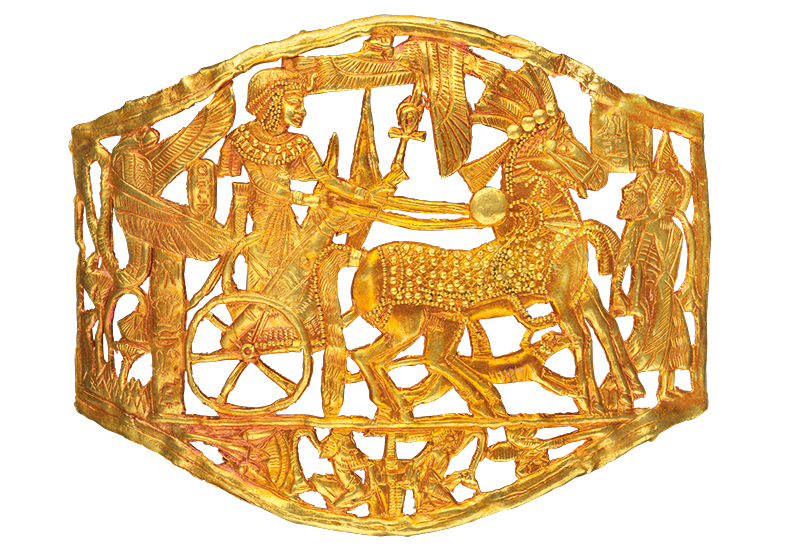
Openwork gold plaque depicting a victorious Tutankhamun in a chariot, from the tomb of Tutankhamun (c. 1320 BC), Egypt. Grand Egyptian Museum, Cairo. Photo: © Sandro Vannini
After a chance encounter with Carter in April 1929, Lord Lloyd excitedly cabled foreign secretary Austen Chamberlain:
I learn from first-hand but most confidential source that there is strong possibility of arrangement being reached at an early date between the Egyptian government and Mr. Howard Carter representing Dowager Countess Carnarvon whereby their claim on Egyptian government in respect of Lord Carnarvon’s discovery will be liquidated by payment of a sum of money. […]
Legally Carnarvon interest is entitled to all duplicates […] As a matter of gratitude for immense wealth conferred both directly and indirectly on Egypt by Lord Carnarvon’s discovery there seems also a case for expecting something more than duplicates. I am informed that Egyptian Government have decided to surrender no objects whatsoever to Lady Carnarvon in the certain belief that they will at once be sold to the highest bidder.
Conclusion at which I have arrived is that if British Museum or His Majesty’s Government were able to come forward in the place of the Carnarvon interests Egyptian Government could hardly refuse to cede duplicates which in themselves would form a valuable collection and which I am told cannot possibly be exhibited here owing to lack of space.
If Lady Carnarvon could be persuaded not to make a fuss, Lloyd suggested, he could encourage the Egyptian prime minister Mohamed Mahmoud to agree to his scheme. Later telegrams from Lloyd fleshed out this dramatic proposal: Mahmoud agreed that the Egyptian government would effectively sell the British Museum duplicate Tutankhamun objects to the value of Lady Carnarvon’s compensation. Mahmoud had instructed Lacau to set aside a collection of duplicates ‘to provide the fullest and most representative collection possible for the British Museum’. This would include at least one of the four golden miniature coffins that held Tutankhamun’s mummified internal organs (‘it might be suggested to Mahmoud that he should let us have two, one for the Metropolitan!’, Lloyd added), jewellery, a couch, a game board, gold figures, and ‘a chariot or two’. Lord Crawford, an éminence grise of the British art world, was enthusiastic about the offer. He was hopeful that newly re-elected prime minister Ramsay MacDonald (‘very anxious to pose as the intellectual’) would award the British Museum a grant towards the objects and suggested that the Metropolitan Museum of Art could buy whatever remained after the BM ran out of money. The final letter in the series, dated 18 July 1929, plans to invite a BM representative out to assess the collection. By this time, Lloyd was steaming to Britain to meet the new Foreign Secretary, who promptly demanded his resignation: his imperial viewpoint was out of step with the new Labour government. Lloyd’s plan to acquire objects from the tomb for British glory faded away without his support – as did Mohamed Mahmoud’s minority government. It seems that the offer of Tutankhamun’s objects had been intended to maintain Lloyd’s support for Mahmoud’s regime. A year later, the new Egyptian government voted Lady Carnarvon a little over £35,000. She gave a quarter of it to Carter.
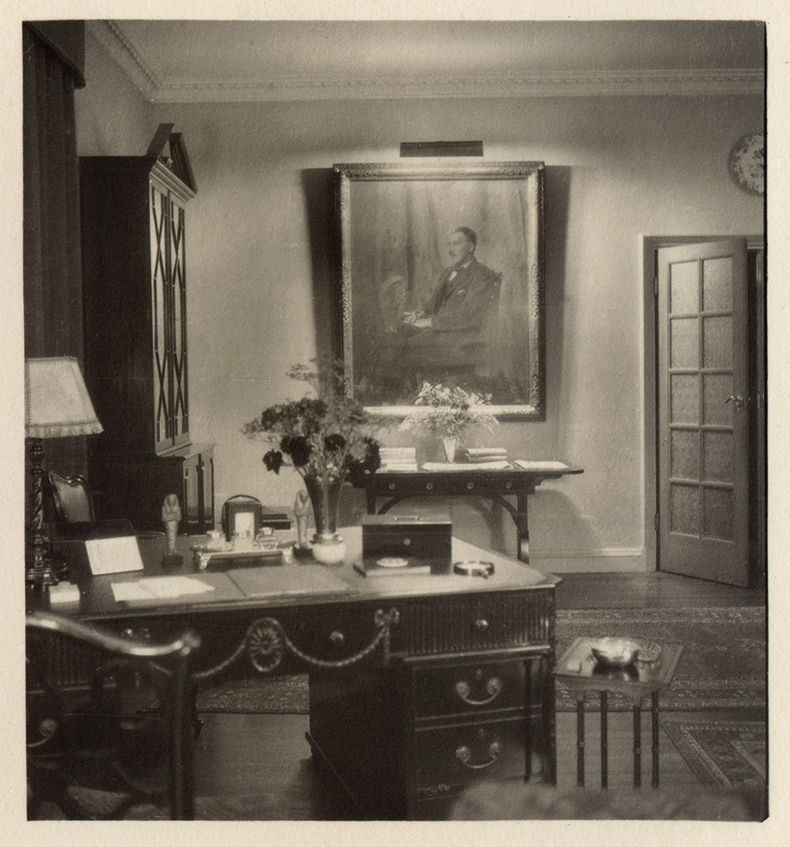
Howard Carter’s flat in Princes Gate, Kensington, London, photographed by Carter in the 1930s. Two of Tutankhamun’s ushabti figures can be seen on the desk, either side of the inkstand. Courtesy Peggy Joy Egyptology Library
Tutankhamun haunted the Foreign Office even after Carter’s death in London in March 1939. His niece, Phyllis Walker, inherited his estate and soon discovered a number of objects inscribed with Tutankhamun’s name in his Kensington flat. These could only have come from the tomb. Photographs of Carter’s flat show that his desk was guarded by two ushabti figures made of shining dark blue faience, while elsewhere were faience vessels, openwork gold ornaments, and a large headrest made of dark blue glass edged with gold. Carter’s executor Harry Burton made enquiries at the Egyptian Museum. Rex Engelbach, the British chief keeper, had few fond memories of Carter. He had been the chief inspector of antiquities in Luxor in 1922, but was out of town when the tomb was discovered. Politeness and protocol dictated that Carter and Carnarvon wait for him to arrive before opening the tomb. They did not. Engelbach complained to the High Commission that the pair had purposely downplayed the significance of the find so they could enjoy unsupervised access to the tomb. Burton’s revelation came as no surprise to Engelbach. In November 1939 he wrote to Sir Miles Lampson, the British ambassador:
For the last five years I have suspected that Howard Carter had not delivered everything found to the Museum, but my suspicions were based on hearsay entirely, and […] nothing could be done as any official report would lead to me and my department being sued for libel or slander.
In England, this summer, Burton wrote to me that among Carter’s effects he had found two figurines bearing the name of Tutankhamun, and asked my advice on getting them back to the Museum. I replied that I would not touch the stuff, let alone bring it out, as I was not going to be made a cat’s-paw of in the matter of hushing up thefts by an Englishman, and that the best thing to do would be to drop the lot into the Thames, but that I would consult with [my colleagues] before I gave a definite decision.
Burton suggested that Miss Walker […] should present or sell them to the Metropolitan Museum of Art, New York, who employ Burton, alleging that the Egyptian Government owed a lot of money to them for services received! Of this I have no knowledge, but did not agree to their being presented as, being stolen, they could not be considered as part of the Carter estate.
The best Engelbach could offer was that the Service would accept them anonymously as ‘probably stolen from the excavations in the tomb of Tutankhamun’, if they could be brought to the museum, but they would have to be taken to Egypt in the British Embassy’s mail bag to avoid examination at customs. Could Sir Miles help?
Even in the relative calm of the Phoney War, Sir Miles Lampson and Foreign Secretary Lord Halifax had better things to deal with than objects of dubious legitimacy. Egypt was formally neutral in the Second World War, but King Farouk was widely suspected of pro-Axis leanings and many Egyptians supported anything that would remove the British. A scandal involving Tutankhamun’s treasures would damage not just what remained of British archaeology in Egypt, but also Britain’s wider interests and reputation. Sir Miles passed the question up to the Foreign Office in London. Two of Lord Halifax’s subordinates added their suggestions to the file:
I suppose these objects must be returned to Egypt. My own inclination is to have them dropped into the Thames, as Mr Engelbach suggested, in spite of the head rest; or to dispose of them in some way to the Metropolitan Museum or the British Museum, where they would disappear from the world just as effectively.
[…]
We are so accustomed to adopting the ‘holier than thou’ attitude towards Egyptians in general (not to mention other foreigners) that it is indeed a shock to find that a British Egyptologist can, on occasion, behave as a crook. I see no reason why His Majesty’s Government should get themselves mixed up in this unsavoury matter. […] Sir Miles Lampson [must] tell Mr. Burton that the stolen articles must be returned. There can be no question of our conniving at any misuse of the official bag, nor am I prepared to advise any other form of sub rosa activity in the hope – which would be exceedingly faint – of concealing for ever the fact that these valuable relics were illegally smuggled out of Egypt.
David Kelly, head of the Egypt desk, who had served in Cairo for several years and may have known Carter, took a more sympathetic view:
I am not sure, incidentally, if it is entirely fair to call Mr. Howard Carter a crook […]. He had a serious financial grievance against the Egyptian Government, (who had really had no share in the discoveries which have so greatly increased tourist interest that the older collections in Cairo are jumbled together and hardly looked at) and he probably convinced himself that he was only getting a bit of his own back […].
The question of the propriety of Carter’s behaviour was less worrisome than the damage the revelation of this scandal might cause, and Lord Halifax’s office instructed Sir Miles to distance himself from the matter:
While fully appreciating your preoccupation over the possibility of hostile criticism and other unfortunate repercussions if or when the facts become public property in Egypt, I do not consider that there can be any question of His Majesty’s Government facilitating the clandestine return of the articles removed by the late Mr. Carter and now found among his effects. In these circumstances, I feel there is only one course that can appropriately be followed, namely to inform the executors of the late Mr. Carter that the relics in question must be returned as soon as possible to their rightful ownership.
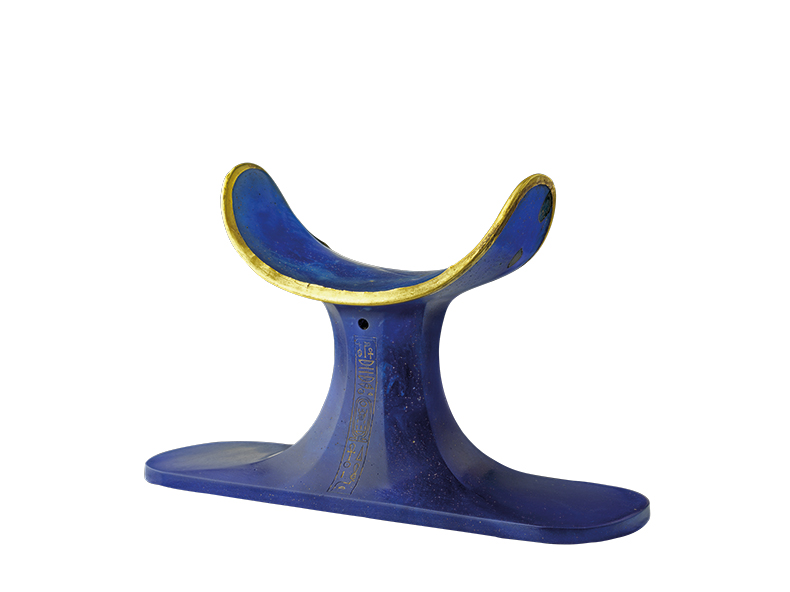
Headrest from the tomb of Tutankhamun (c. 1320 BC), Egypt. Grand Egyptian Museum, Cairo. Photo: © Sandro Vannini
Having washed their hands of the matter, the Foreign Office closed its file on Carter and Carnarvon’s dubious legacy. Fortunately for Phyllis Walker, the Service des Antiquités was just as anxious to avoid a scandal of its own. Étienne Drioton (successor to Pierre Lacau) told her to leave the Tutankhamun objects at the Egyptian Embassy in London, where they spent the rest of the War. In 1946 they were sent in the Egyptian diplomatic bag to King Farouk, who quietly gave most of them to the Egyptian Museum. It would take another political upheaval to reveal the next twist in the saga: Farouk had kept Tutankhamun’s stunning gold and glass headrest for his own collection. After he was deposed in the coup of 1952, Farouk’s magpie hoard – Fabergé, coins, banknotes, cars, antiquities (some purchased on Carter’s advice), snuffboxes, guns, and erotica – was catalogued for sale to bolster the Egyptian treasury. His antiquities, including the headrest, were withdrawn from sale and given to the Egyptian Museum, sending a signal that the new regime was not going to allow its past to be put up for sale. The governments of Gamal Abdel Nasser and his successors put Tutankhamun’s treasures to work in a different way, sending them on tour to drum up support for Egypt. Between 1971 and 1981, Tutankhamun’s golden mask spent more time travelling than it did in Cairo. As part of this campaign, foreign museums began to examine the histories of their collections, and the headrest was not the last object from Tutankhamun’s tomb to return to Egypt. The Met returned another group of objects from the tomb in 2010, and further revelations of objects possibly taken from the tomb by Carter continue to emerge as scholars study his collection and that of Lord Carnarvon, now in the Met (Carter reportedly cleared £5,000 commission for brokering the sale). Carnarvon’s question to Carter about the tomb – ‘I wonder if you’ll find much unmarked stuff ’ – takes on an ominous significance in this context.
The opening of the Grand Egyptian Museum, whenever it finally takes place, is sure to be a triumphalist celebration, eliding Tutankhamun’s treasures with President Abdel Fattah el-Sisi’s authority. Western spectators inclined to take a sceptical view of the proceedings should remember that previous Egyptian governments had to fight hard to establish the principle that Tutankhamun’s tomb belonged to Egypt, not its excavators and their heirs. Perhaps a degree of pride in both achievements is excusable.
From the November 2022 issue of Apollo. Preview and subscribe here.
Unlimited access from just $16 every 3 months
Subscribe to get unlimited and exclusive access to the top art stories, interviews and exhibition reviews.


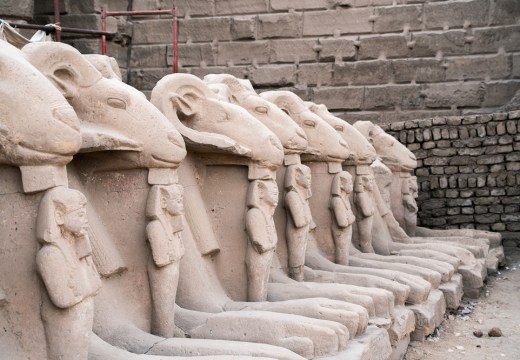
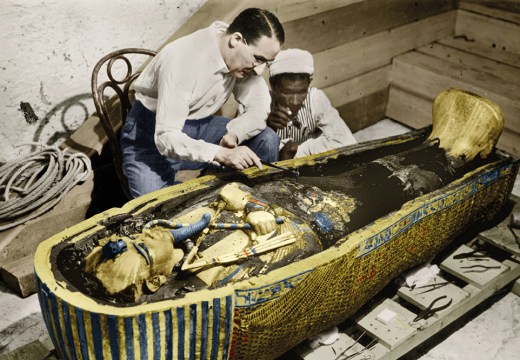
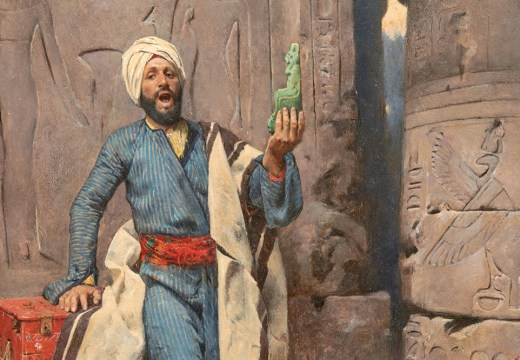









![Masterpiece [Re]discovery 2022. Photo: Ben Fisher Photography, courtesy of Masterpiece London](http://www.apollo-magazine.com/wp-content/uploads/2022/07/MPL2022_4263.jpg)
It’s time for the government of London to return to its rightful home